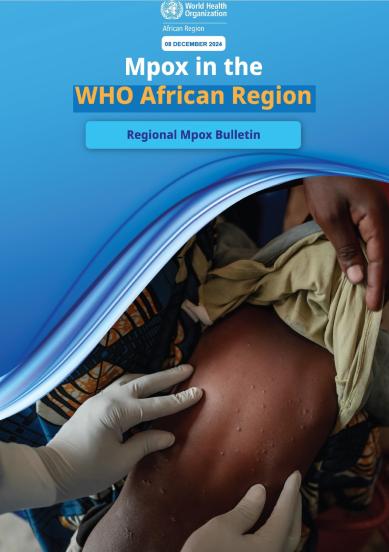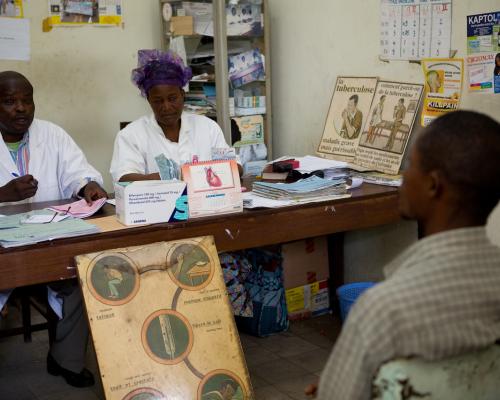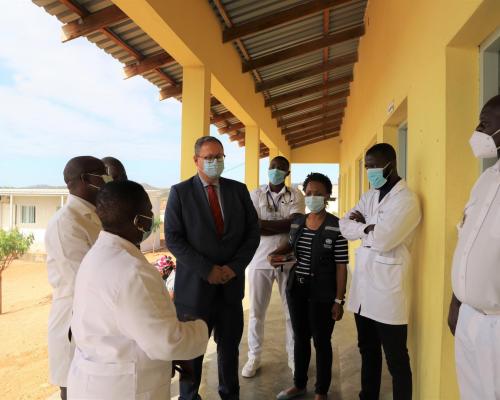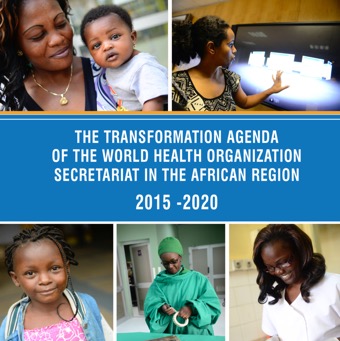
Regional Mpox Bulletin: 08 December 2024
Since January 1, 2022, Mpox cases have been reported to WHO from 21 Member States within the WHO African Region. As of December 1, 2024, a total of 18, 349 laboratory-confirmed cases, including 82 deaths, have been reported.
In 2024 alone, as of December 1, 19 countries have reported 15, 992 confirmed cases, including 60 deaths. The majority of cases in 2024 have been reported from three countries: the Democratic Republic of the Congo (11,984 cases), Burundi (2,523 cases), and Uganda (925 cases). In the last 6 week from 08 December 2024, 14 countries have collectively reported 3 400 laboratory confirmed cases with seven deaths (CFR=0.2) trends in the last 6 weeks compared to the 3 208 cases and 15 deaths (CFR=0.5) in the previous 6 weeks).
The epidemiological comparison between the WHO AFRO Regional and the DRC highlights significant disparities in surveillance and testing performance for Mpox cases across Weeks 38 to 49. WHO AFRO reported a total of 15,306 suspected cases, with 15,186 tests conducted, achieving near-total testing coverage of 99.2% and a test positivity rate (TPR) of 27.6%. This high testing coverage ensured timely identification of cases, leaving only 54 suspected cases unresolved after testing. In contrast, the DRC reported a far higher burden of 53,860 suspected cases but conducted only 24,517 tests, resulting in a much lower testing coverage of 45.5% and a significantly higher TPR of 48.9%. Over 30,000 suspected cases in the DRC remain untested, reflecting critical testing gaps and resource limitations. Weekly trends in WHO AFRO figures showed consistent testing coverage above 97%, with a gradual rise in positive cases and TPR peaking at 64.6% in Week 49, indicating either rising transmission or improved targeting of high-risk cases. Conversely, the DRC figures showed declining testing coverage over time, dropping from 41.6% in Week 38 to 17.6% in Week 48, despite sustained high numbers of suspected cases. The sharp decrease in testing and the corresponding drop in positive cases to 3.9% in Week 49 suggest under detection and significant surveillance challenges. Overall, the WHO AFRO Regional figures reflect a robust and consistent response, while the DRC figures reveal critical gaps in testing capacity and surveillance, which hinder effective control of the Mpox epidemic. Addressing these gaps through enhanced testing coverage, resource mobilization, and improved surveillance strategies is crucial to reducing the burden of Mpox in the DRC.
Note: A significant number of suspected cases, that are clinically compatible with mpox are not tested due to limited diagnostic capacity and never get confirmed. For this reason, suspected cases (where no tests were done or with pending laboratory results) are also shown in this section. Care should be taken when interpreting these cases, as they are collected according to different case definitions. In some countries, suspected cases that are negative after laboratory tests are not removed from case counts. Not all countries have robust surveillance systems for mpox, so case counts are likely to be underestimated.


